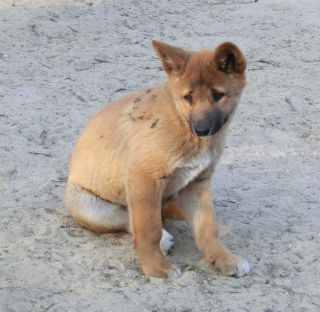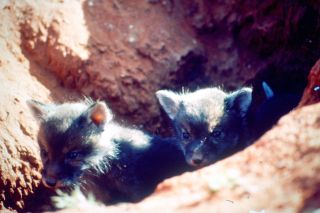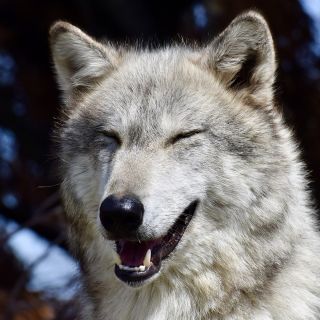Animal Behavior
The Dingo-Aboriginal Model of Dog Domestication
How the Australian dingo can shed light on early dogs.
Posted May 12, 2023 Reviewed by Davia Sills
Key points
- New research compares the behavior of the dingo in Australia to that of wolf pups in Late Pleistocene Central Europe.
- The dingo-Aboriginal relationship could be a useful model for how early humans interacted with wolves.
- This model suggests early humans raised wolf pups away from their breeding grounds and thus disseminated wolves across Eurasia.
- More research into how dingoes and Aboriginals behave in varied contexts could help further elucidate the model.

A trio of researchers, Adam Brumm, Mietje Germonpré, and Loukas Koungoulos, has proposed that the dingo and its relationship to Aboriginal foraging communities in Australia can serve as a model for understanding how the wolf became the dog.
In Late Pleistocene Eurasia, hunter-gathers routinely raided “wild wolf dens for pre-weaned pups, which were socialized to humans and kept in camp as tamed companions (‘pets’).” The authors...
...outline a model in which captive wolf pups that reverted to the wild to breed when they were sexually mature established their territories in the vicinity of foraging communities—in a ‘liminal’ ecological zone between humans and truly wild-living wolves. Many (or most) of the wolf pups humans took from the wilderness to rear in camp may have derived from these liminal dens where the breeding pairs had been under indirect human selection for tameness over many generations.
The authors point out that this habit of pup collection “highlights the importance of the large seasonal hunting/aggregation camps associated with mammoth kill-sites in Gravettian/Epigravettian central Europe.” (The Gravettian and Epigravettian cultures date from 33,000 years ago to roughly 10,000 years ago.) Brumm et al. argue that these mammoth kill-sites were rendezvous points for a large number of foragers who gathered there annually during the wolves’ breeding season. The authors suggest that, over many generations, free-ranging wolves that denned and whelped in the liminal zones near the seasonal camps became the first domesticated dogs.
These animals breeding there became the source of pups, which, over time, would be taken in by these foragers, who then took the pups elsewhere to raise them, dispersing the wolf pups around the region. That also meant that once sexually mature, these animals had rather limited options for mates, leading them to inbreed at times, a habit that served to fix certain traits in that group’s population and which made it almost impossible to tell where exactly the modern dog first arose. Per the authors, “it is this pattern of hunter-gatherers who caught and reared wild wolf pups gathering seasonally in large numbers that might have been the catalyst for the early changes leading to the first domesticated dogs—whether in western Eurasia or further afield.”

This theory makes a great deal of sense and is well supported by a discussion of hunter-gathers collecting wolf pups—and many other animals. It also helps to refute the still-popular notion that dogs arose from scavenging wolves who slunk into human camps to abscond with scraps and other material left by their inhabitants. Among other problems with this “dump diver” model is the simple fact that there would not have been enough food available from these sources to support a viable population of dogs or tame wolves, whereas Aboriginal foragers, as the authors point out, frequently raised the pups they had obtained until the sexually mature dingo went to find a mate.
We would like to hear more about the particularities of the Aboriginal-dingo relationship as it existed in indigenous communities, which themselves varied geographically according to the ecosystem that supported them. Shortly after receiving a draft of this article, for example, I read a short piece referring to a group of Aboriginals who relied on cooperation with dolphins to catch their favorite fish. That sounded much like what Brazilian fishermen do in relying on river dolphins to tell them when to deploy their nets. Stories like this could help make the Aboriginal-dingo relationship come to life.
I would like to see more discussion of the cultural ties between Aboriginal people and dingoes, not only those kept as pets in the camp (although more information is needed there) but also those who have gone back to the wild. Some suggest that their behavior has been altered through the pattern of adoption and “release” of dingoes. For example, there are reports of one group of Aboriginals who watch for packs of dingoes on the hunt and then follow them to the kill site, where the Aboriginals then step in, make the kill, and claim it for their own. I saw a film once in which the dhole, another pack-hunting canid, changed their hunting pattern altogether when they became aware that humans were following them in that same fashion.

Left unanswered by the authors here is the question of what within the wolves makes it possible for them to give rise to dogs. Is the socialization period sufficient, even if the collection of pups is made so that they are taken before the first critical socialization period closes down? This paper doesn’t answer that because, of course, the dingo is already a dog, although some people claim it is only a half-domesticated dog, the rest being wolf. I don’t believe that myself, but it is plausible.
It is true that dingoes and dogs appear to hybridize quite freely and sometimes are difficult to distinguish from each other. I would also like to know, as clearly, dingoes in coastal communities are different from those in the desert or mountains, how they are different behaviorally and even biologically. Unfortunately, colonization was not kind to the dingo, nor to the Aboriginal people of Australia, and so that answer may prove quite difficult, if not impossible, to come by.
Of course, it is not altogether fair to criticize a paper or book for what it does not cover. Rather, it needs to be judged on the basis of what it does address. In that case, this paper is a positive contribution to the question of how the wolf became the dog, and we hope to see either these or other researchers expand on some of the questions of how dingoes and people got together and stayed together to create a flourishing if sometimes troubled relationship.
References
I thank Daniel Elliott for his help on this article.
Brumm A, Germonpré M and Koungoulos L (2023) The human-initiated model of wolf domestication – An expansion based on human-dingo relations in Aboriginal Australia. Front. Psychol. 14:1082338. doi: 10.3389/fpsyg.2023.1082338.




